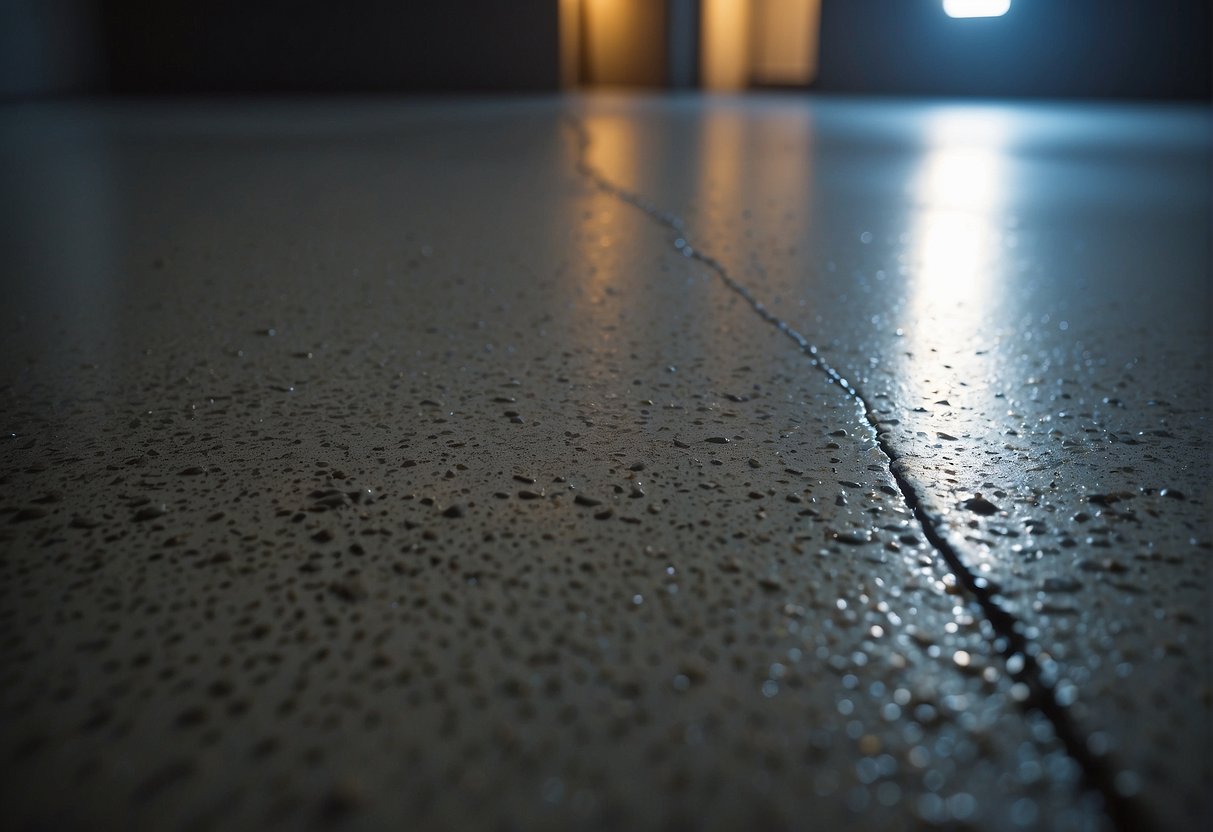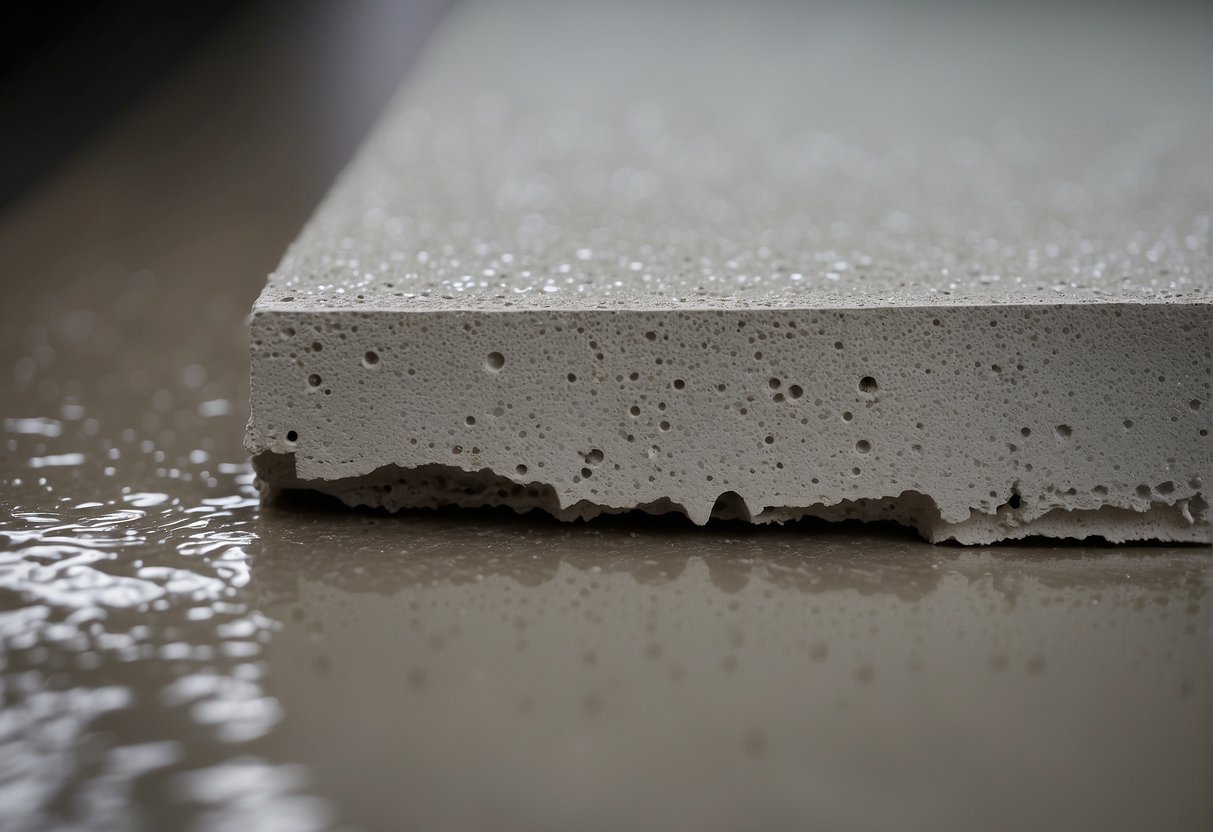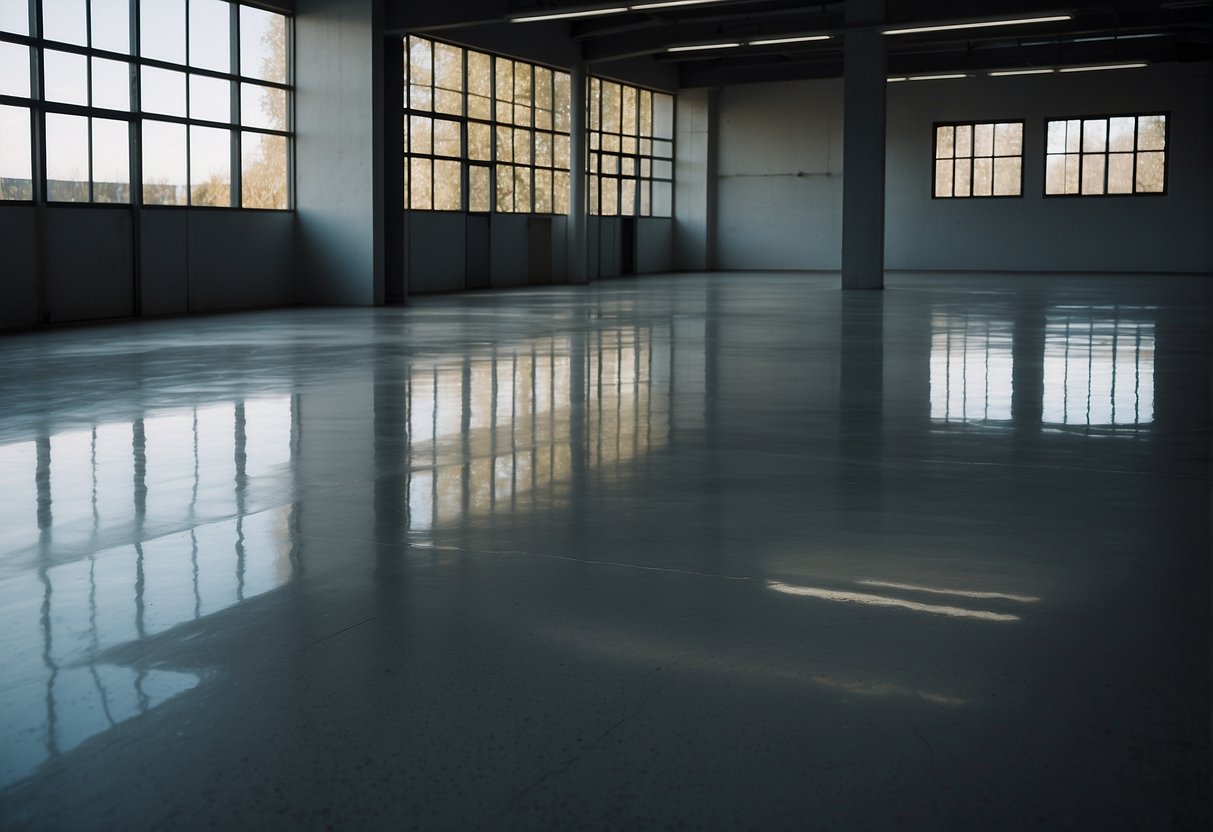Sealed and unsealed concrete floors are both popular options for homes and businesses alike. While both types of concrete have their pros and cons, choosing the right one for your space can make all the difference. As someone who has worked with concrete for years, I have seen firsthand the benefits and drawbacks of both sealed and unsealed concrete floors.
Understanding the differences between sealed and unsealed concrete floors is key to making the right decision for your space. Sealed concrete is a popular choice because it is more resistant to stains and chemicals, making it ideal for high-traffic areas. On the other hand, unsealed concrete is more porous and can be more susceptible to damage from spills and other accidents. By weighing the pros and cons of each option, you can make an informed decision that best suits your needs.
Key Takeaways
- Sealed and unsealed concrete floors both have their pros and cons.
- Sealed concrete is more resistant to stains and chemicals, while unsealed concrete is more porous and susceptible to damage.
- Understanding the differences between sealed and unsealed concrete is key to choosing the right option for your space.
Understanding Concrete Sealers
As a professional in the construction industry, I have come across various types of concrete sealers. Concrete sealer is a protective layer applied to concrete surfaces to prevent damage from water, chemicals, and other elements. In this section, I will discuss the different types of concrete sealers, the benefits of sealing concrete, and the sealing process.
Types of Concrete Sealers
Concrete sealers can be categorized into two main types: penetrating and film-forming sealers. Penetrating sealers penetrate the concrete surface to form a protective barrier, while film-forming sealers create a surface film on the concrete. Each type has its own subtypes and specialty.
Penetrating sealers include densifiers, silicates, and silanes. Densifiers penetrate deep into the concrete to harden and strengthen it. Silicates penetrate the concrete to form a chemical bond, while silanes penetrate the concrete to form a water repellent barrier.
Film-forming sealers include acrylic sealers, polyurethane, and epoxy coatings. Acrylic sealers are the most commonly used film-forming sealer. They are easy to apply, dry quickly, and provide a glossy finish. Polyurethane and epoxy coatings are more durable and provide a thicker layer of protection.
Benefits of Sealing Concrete
Sealing concrete has several benefits. First, it protects the concrete from damage caused by water, chemicals, and other elements. Second, it enhances the appearance of the concrete by providing a glossy or matte finish. Third, it prevents staining and discoloration caused by oil, grease, and other substances. Fourth, it can improve the durability and lifespan of the concrete.
Sealing Process
The process of sealing concrete depends on the type of sealer used. Penetrating sealers are typically applied with a sprayer or roller and allowed to dry for several hours. Film-forming sealers are applied in multiple coats with a sprayer or roller and allowed to dry for several days.
Before applying the sealer, the concrete surface must be clean and free of debris. Any cracks or holes in the concrete must be filled and repaired before sealing. It is also important to follow the manufacturer’s instructions for application and curing time.
In conclusion, understanding the different types of concrete sealers, the benefits of sealing concrete, and the sealing process is important for anyone working with concrete surfaces. By applying the appropriate sealer, you can protect and enhance the appearance of concrete surfaces, improving their durability and lifespan.
Comparing Sealed and Unsealed Concrete
When it comes to concrete, there are two main options: sealed and unsealed. Both have their pros and cons, and the choice between the two depends on various factors, including personal preference, budget, and intended use. In this section, I will compare sealed and unsealed concrete in terms of their appearance and texture, maintenance and durability, and cost implications.
Appearance and Texture
One of the main differences between sealed and unsealed concrete is their appearance and texture. Unsealed concrete has a dull, flat look, while sealed concrete has a glossy, smooth finish. Sealed concrete also tends to have a more vibrant and richer color, while unsealed concrete’s color remains flatter and dull. Sealed concrete can also have a marble or mottled look.
In terms of texture, unsealed concrete is porous and easier to damage, while sealed concrete has a layer of protection that makes it more resistant to stains, scratches, and cracks.
Maintenance and Durability
Maintenance and durability are also important factors to consider when choosing between sealed and unsealed concrete. Sealed concrete is more durable and resistant to stains and chemicals. It is also easier to maintain, as it requires less cleaning and is less likely to develop cracks or pores. However, sealed concrete can become slippery when wet and may require resealing over time.
Unsealed concrete, on the other hand, has a natural appearance and does not require resealing. However, it is more susceptible to staining and abrasion, and it can develop cracks and pores over time. Unsealed concrete also requires more maintenance and cleaning to keep it looking its best.
Cost Implications
Finally, cost is an important consideration when choosing between sealed and unsealed concrete. Sealing concrete can be expensive compared to leaving it unsealed, as it involves installing an acrylic layer over the top of the existing floor. However, sealed concrete can offer long-term cost savings, as it requires less maintenance and is less likely to develop cracks or pores.
Unsealed concrete is less expensive initially, but it may end up costing more in the long run due to its higher maintenance requirements and susceptibility to damage and staining.
In summary, both sealed and unsealed concrete have their advantages and disadvantages. The choice between the two depends on various factors, including personal preference, budget, and intended use. Sealed concrete offers a glossy, smooth finish and is more durable and easier to maintain, but it can be more expensive. Unsealed concrete has a natural appearance and is less expensive initially, but it requires more maintenance and is more susceptible to damage and staining.
Pros and Cons of Sealed Concrete
Sealed concrete is a popular choice for both residential and commercial flooring. It has several advantages, including protection against moisture, stains, and damage. However, it also has some drawbacks that should be considered before choosing this type of flooring.
Pros
-
Stain Resistance: Sealed concrete is more resistant to stains and chemicals than unsealed concrete. The sealant creates a barrier that prevents liquids from penetrating the surface, making it easier to clean and maintain.
-
Protection: Sealed concrete provides a shield against moisture, which can cause damage to the concrete surface over time. It also protects against scratches, abrasions, and surface deterioration, making it ideal for high-traffic areas.
-
Aesthetic Appeal: Sealed concrete has a glossy finish that adds a sleek and modern look to any space. It is available in a range of colors and patterns, making it a versatile option for any design scheme.
-
UV Protection: Many sealers include UV protection to prevent sun damage and fading, which is a big benefit in areas with a lot of natural light.
Cons
-
Slippery: Sealed concrete can be slippery, especially when wet. This can be a safety hazard, especially in areas with heavy foot traffic.
-
Matte Finish: Sealed concrete is available in a matte finish, but it is not as popular as the glossy finish. If you prefer a matte finish, you may have limited options to choose from.
-
Low-Traffic Areas: Sealed concrete may not be the best option for low-traffic areas, as it can be more expensive than unsealed concrete.
In conclusion, sealed concrete has several advantages, including stain resistance, protection, aesthetic appeal, and UV protection. However, it can also be slippery and may not be the best option for low-traffic areas. It is important to weigh the pros and cons before choosing this type of flooring for your space.
Maintaining Your Concrete
Maintaining your concrete surface is essential to ensure its longevity and keep it looking great. In this section, I will cover regular maintenance, resealing, and repair.
Regular Maintenance
Regular maintenance is crucial to keep your concrete surface looking its best. Here are some tips to help you maintain your concrete surface:
- Clean your concrete surface regularly with a mild detergent and water. Avoid using harsh chemicals as they can damage the surface.
- Remove any stains as soon as possible to prevent them from becoming permanent. Use a concrete cleaner or a mixture of baking soda and water to remove stains.
- Avoid dragging heavy objects across the surface as it can scratch the concrete. Use furniture pads to protect the surface.
- Avoid using salt or de-icing chemicals on your concrete surface as they can damage the surface.
Resealing and Repair
Resealing your concrete surface is essential to protect it from stains, scratches, and wear. Here are some tips to help you reseal your concrete surface:
- Reseal your concrete surface every 3-5 years, depending on the amount of foot traffic it receives.
- Clean the surface thoroughly before resealing to ensure the sealer adheres properly.
- Apply the sealer evenly using a sprayer or roller.
- Allow the sealer to dry completely before using the surface.
If your concrete surface has chipping, cracking, or impurities, it may require repair. Here are some tips to help you repair your concrete surface:
- Clean the surface thoroughly before repairing to ensure the repair material adheres properly.
- Use a concrete patching compound to fill in any cracks or chips.
- Allow the patching compound to dry completely before using the surface.
In summary, regular maintenance, resealing, and repair are essential to keep your concrete surface looking great. By following the tips outlined above, you can ensure your concrete surface lasts for many years to come.
Design and Aesthetic Considerations
When it comes to design and aesthetics, both sealed and unsealed concrete offer customization options to suit different preferences and design styles. However, there are some differences to consider.
Customization Options
Stained concrete is a popular option for those looking to add color to their concrete floors. With stained concrete, the color is added to the surface of the concrete, creating a unique and sophisticated look. Both sealed and unsealed concrete can be stained, but it is important to note that the color may appear differently depending on whether the concrete is sealed or not.
Polished concrete is another option for those looking for a sophisticated look. Polished concrete offers a glossy sheen that can help to reflect light and make the space feel brighter. Both sealed and unsealed concrete can be polished, but it is important to consider the gloss levels and reflectivity of the surface, as well as any imperfections that may be present.
Surface Finishes and Textures
In terms of surface finishes and textures, both sealed and unsealed concrete offer a range of options. Sealed concrete can be finished with a matte or glossy finish, while unsealed concrete can be left with a natural, raw finish. It is important to consider the desired level of reflectivity and sheen when choosing between sealed and unsealed concrete.
Texture is another important consideration when choosing between sealed and unsealed concrete. Unsealed concrete can offer a more natural, textured look, while sealed concrete can offer a smoother, more uniform surface. Ultimately, the choice between sealed and unsealed concrete will come down to personal preference and the desired aesthetic for the space.
In conclusion, both sealed and unsealed concrete offer a range of design and aesthetic options. It is important to consider factors such as color, gloss levels, reflectivity, imperfections, and personal preference when choosing between the two.
Practical Applications and Recommendations
Residential vs. Commercial Use
When it comes to sealing concrete, the practical applications can vary depending on whether you are using it for residential or commercial purposes. For residential use, sealing a concrete driveway, patio, or garage floor can help protect it from stains and abrasions, as well as extend its lifespan. Sealing can also make the concrete easier to clean and maintain, which is especially important for outdoor spaces that are exposed to the elements.
For commercial use, sealing concrete floors can provide a number of benefits. Commercial coatings can be applied to concrete floors to make them more durable and resistant to wear and tear from foot traffic. This is particularly important in high-traffic areas such as retail stores, warehouses, and factories. Sealing can also make the floors easier to clean and maintain, which can help to improve overall hygiene and safety in the workplace.
Choosing the Right Sealer for Your Space
When it comes to choosing the right sealer for your space, there are a number of factors to consider. Different types of sealers offer different levels of protection and finish, so it is important to choose one that is appropriate for your needs. Some sealers offer a high-gloss finish, while others provide a more natural look.
It is also important to consider the type of concrete you are sealing. Different types of concrete require different types of sealers, so it is important to choose a sealer that is compatible with your specific type of concrete. Additionally, specialized equipment may be required to apply certain types of sealers, so it is important to factor in the cost of equipment rental or purchase when choosing a sealer.
Overall, sealing concrete can provide a number of benefits for both residential and commercial use. By choosing the right sealer for your space and needs, you can help to protect your concrete and extend its lifespan.
Frequently Asked Questions
What are the benefits of sealing a concrete floor?
Sealing a concrete floor has several benefits, including protecting it from water damage, staining, and wear and tear. Sealed concrete is also more resistant to UV rays and fading, making it an excellent choice for outdoor surfaces. Additionally, sealing concrete can enhance its appearance, making it look more polished and professional.
How does sealing concrete affect its durability and maintenance?
Sealing concrete can significantly improve its durability and reduce the need for maintenance. Sealed concrete is more resistant to cracking, spalling, and other forms of damage caused by exposure to the elements. Sealed surfaces are also easier to clean and maintain, as they are less likely to accumulate dirt and grime.
What are the cost implications of sealing a concrete surface?
The cost of sealing a concrete surface can vary depending on the size of the area, the type of sealer used, and the condition of the concrete. However, in general, sealing concrete is a cost-effective way to protect and enhance its appearance. The cost of sealing is typically lower than the cost of repairing or replacing damaged concrete.
Can sealing a driveway extend its lifespan compared to an unsealed driveway?
Yes, sealing a driveway can significantly extend its lifespan compared to an unsealed driveway. Sealed driveways are more resistant to water damage, cracking, and other forms of wear and tear. Additionally, sealing a driveway can enhance its appearance, making it look more polished and professional.
What potential issues might arise from not sealing concrete surfaces?
Not sealing concrete surfaces can lead to a range of issues, including water damage, staining, and wear and tear. Unsealed concrete is also more susceptible to cracking, spalling, and other forms of damage caused by exposure to the elements. Additionally, unsealed concrete is more difficult to clean and maintain, as it is more likely to accumulate dirt and grime.
How does the appearance of sealed concrete compare to unsealed concrete?
Sealed concrete generally has a more polished and professional appearance compared to unsealed concrete. Sealed surfaces are more resistant to fading and UV damage, which means they retain their color and vibrancy for longer. Additionally, sealed concrete is easier to clean and maintain, which can help it maintain its appearance over time.

Hi, I’m Sal Muller of Tooltrip.com. My DIY experience led me to understand essential power tools for home projects. Tooltrip.com guides enthusiasts and professionals in choosing right tools for any job. I provide concise top tool reviews for easier, efficient DIY.





